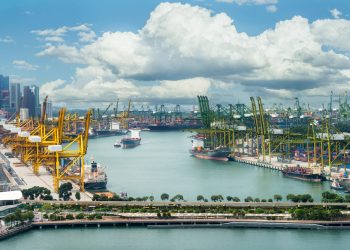
Scientists from NOAA’s Pacific Marine Environmental Laboratory (PMEL), the University of Alaska and the Alaska Ocean Observing System are teaming up this summer and early fall to use new unmanned tools to study how melting glaciers in Alaska’s Prince William Sound may be intensifying ocean acidification in the sound and on the Gulf of Alaska continental shelf.
The term “ocean acidification” describes the process of ocean water becoming more acidic as a result of absorbing nearly a third of the carbon dioxide released into the atmosphere from human sources. This change in ocean chemistry is making it difficult for marine organisms such as shellfish and corals to build and maintain shells and skeletons.
“The glacial melt water entering the sound has low concentrations of carbonate ion, which marine organisms need to build shells and skeletons,” said Jeremy Mathis, an oceanographer at NOAA’s Pacific Marine Environmental Laboratory. “When increasing amounts of this freshwater enter the sound, it makes surface water less hospitable for animals that build shells.“
Freshwater from glaciers is also low in carbon dioxide relative to marine waters. But when these waters enter the marine environment they quickly absorb carbon dioxide from the atmosphere to reach equilibrium, and this, in turn, contributes to increased acidity of the surface waters.
While scientists noted that Prince William Sound has had conditions conducive to ocean acidification for several decades, sparse sampling hindered their understanding of glacial runoff and other processes that are affecting the ecosystem. Now new autonomous gliders, adapted by PMEL scientists, allow researchers to survey large areas of the ocean for months at a time.
“Ships are incredibly expensive to operate so we may only get one or two chances a year to make an observation in a certain area,” Mathis said. “But with these new autonomous gliders, we can make thousands of measurements over several months.“
Earlier this spring, scientists launched two Carbon Wave Gliders and a Slocum underwater glider into the Gulf of Alaska to collect data for five months.
The Carbon Wave Gliders, which look and act like remotely-controlled surfboards, ride at the surface of the ocean, collecting data on water temperature, salinity, pH, dissolved oxygen and carbon dioxide in water and air. PMEL engineers worked with Liquid Robotics, the company that developed the Carbon Wave Glider, to add new data sensors to this glider. Scientists and engineers at PMEL pilot the gliders that are propelled by wave energy. Solar batteries power the sensors, which transmit real time data via satellite to the pilots.
The Slocum glider, which resembles a torpedo and was conceived by Douglas C. Webb, tracks ocean data down to 200 meters. It travels from a near shore ocean acidification buoy across the continental shelf and back. Scientists pilot the Slocum from PMEL as well. It provides data showing the downstream effects of melting glaciers and how freshwater changes the chemistry of the water column. This is the first time that these types of gliders have been used in the cold waters of Alaska.
“Understanding these unique processes will help us determine which species are at risk, not just in Prince William Sound, but up and down the coast of the Gulf of Alaska,” said Mathis. “This information can help Alaskan communities better prepare for and adapt to ecosystem changes that may affect important fisheries.“
Source and Image Credit: NOAA
In the start, I was frank with you propecia before and after has changed my being. It has become much more fun, and now I have to run. Just as it is incredible to sit.



























































